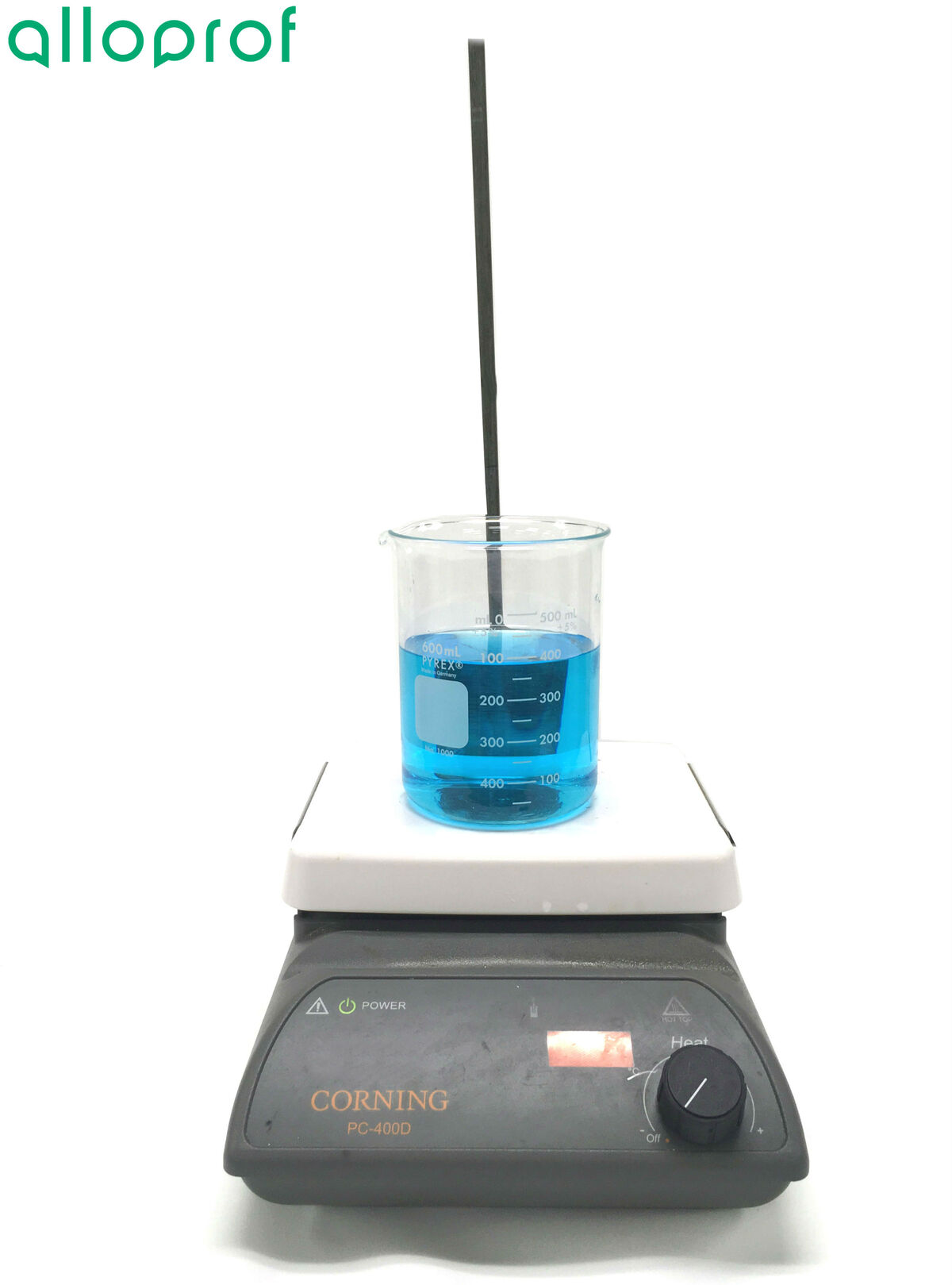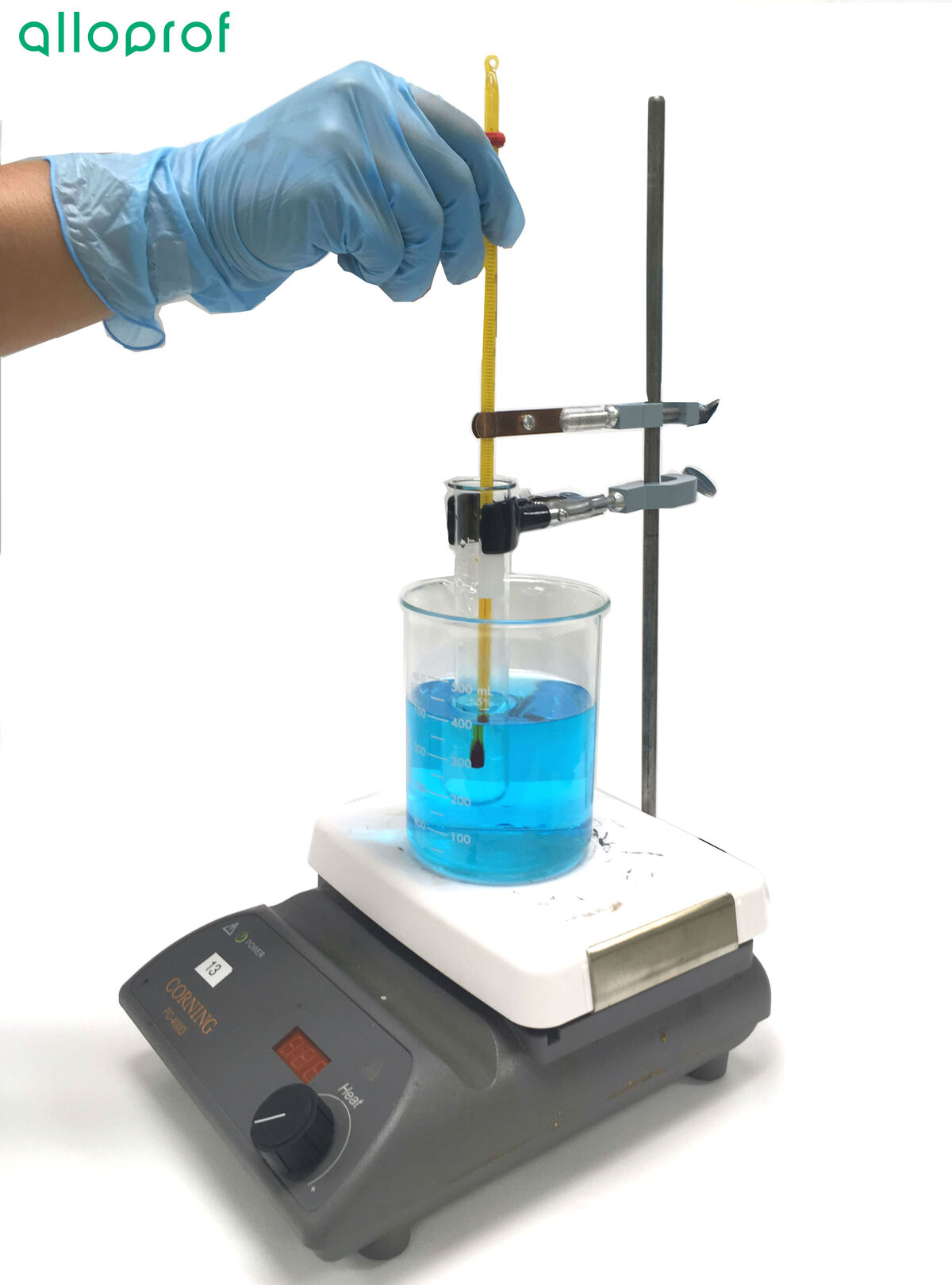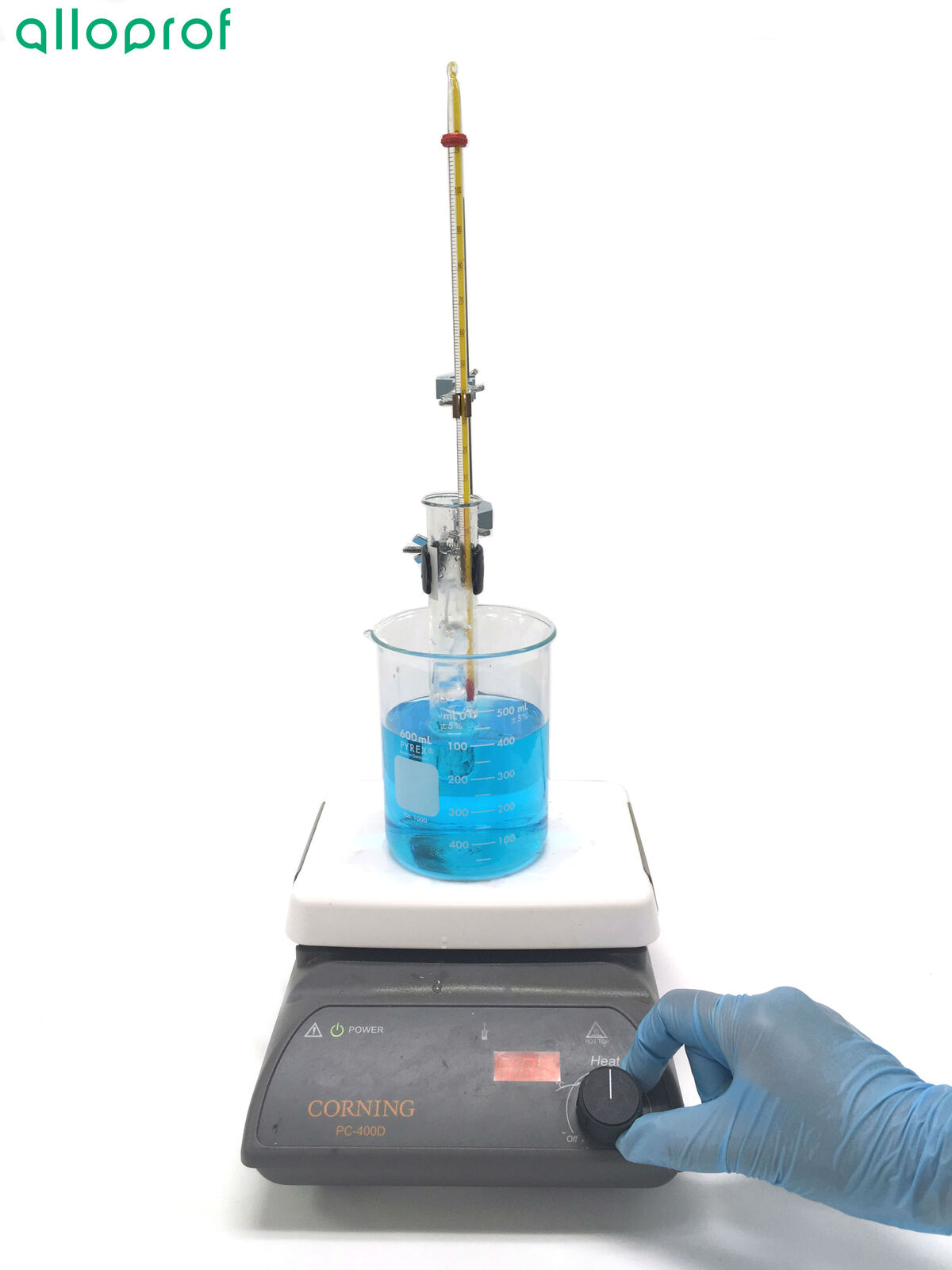In this concept sheet, the procedures for determining the melting point and the boiling point of a substance are explained.
The melting point is the temperature at which a substance changes from a solid state to a liquid state. It is a characteristic property of matter. Thus, by performing the following procedures correctly, it will be possible to identify an unknown substance.

-
Universal support
-
Thermometer clamp
-
Thermometer
-
Universal clamp
-
500 mL beaker
-
Test tube
-
Solid substance
-
Hot plate
-
Water (or glycerin)
-
Timer
-
Beaker tongs
-
Apron or smock
-
Safety glasses

1. Fill the beaker two-thirds full with tap water and place it on a hot plate.

If the melting temperature is expected to be above 90 ºC, glycerin should be used instead of water.
2. Pour the solid substance into the test tube so that it covers the bottom of the test tube.

3. Using the universal clamp, secure the test tube to the universal support. Place the test tube in the beaker filled with water, ensuring that the bottom of the test tube does not touch the bottom of the beaker.

4. Insert the thermometer into the solid substance and secure it to the universal holder while making sure that the thermometer does not touch the bottom or sides of the test tube.

5. Turn on the hot plate and heat the beaker to medium intensity.

Always work carefully near a hot plate. In addition, wear safety goggles and a smock to avoid skin burns caused by boiling water or glycerin.
6. As soon as the solid substance begins to become liquid, record the temperature.

7. Continue to record the temperature at 30-second intervals to ensure that it remains constant. This temperature represents the melting point of the solid substance.

8. Turn off the hot plate and remove the beaker using beaker tongs.

9. Clean and store equipment.
The seventh step of this protocol is essential, because it allows us to verify if a plateau has been reached. This plateau is the point at which the solid substance will completely turn into a liquid, in other words, when the phase change is fully completed.
The temperature obtained during this protocol is used to determine the melting temperature of a substance. By using manuals or reference tools, it will therefore be possible to identify the substance, as each substance has its own melting point.
The boiling point is the temperature at which a substance changes state from liquid to a gas. It is also a characteristic property of matter. It is possible to identify a substance by determining its boiling point, because each substance has a unique boiling point.

-
Universal support
-
Thermometer clamp
-
Thermometer
-
Universal clamp
-
500 mL beaker
-
Test tube
-
Solid substance
-
Hot plate
-
Water (or glycerin)
-
Timer
-
Beaker tongs
-
Apron or smock
-
Safety glasses

1. Fill the beaker one-third full with the liquid substance and place it on a hot plate.

2. Place the thermometer into the liquid substance and attach it to the universal holder, making sure that the thermometer does not touch the bottom or sides of the beaker.

3. Turn on the hot plate and gently heat the beaker.

Always work carefully near a hot plate. In addition, wear safety goggles and a smock.
4. As soon as the liquid substance begins to bubble, record the temperature.

5. Continue to record the temperature at 30-second intervals to ensure that it is constant. This temperature represents the boiling point of the liquid substance.

6. Clean and store the equipment.
As is the case with the melting point, it is important to verify whether a plateau has been reached, since this plateau ensures that the temperature recorded is the temperature at which the phase change occurs.
It is possible to identify a liquid substance by determining its boiling point. It is necessary to compare the value obtained experimentally with the theoretical data presented in the manuals or the reference tools.